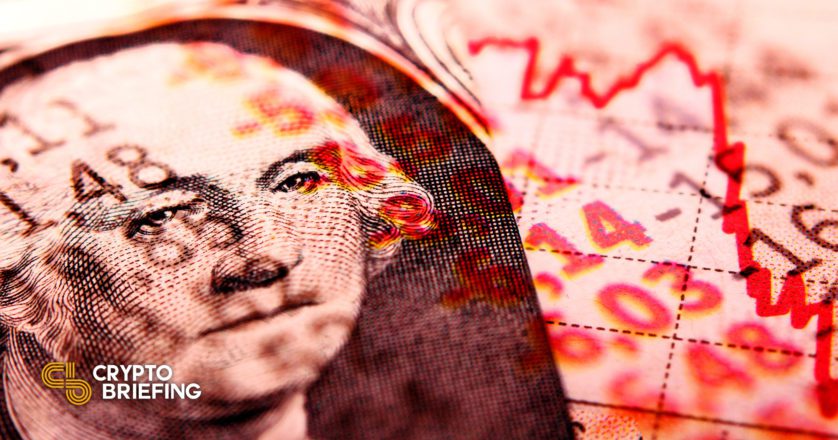U.S. Enters Recession Territory With Second-Quarter GDP Falling 0.9%
The real economic growth in the U.S. declined 0.9% in the second quarter of this year, hurling the economy into a so-called "technical recession" as it records two consecutive quarterly contractions.

Key Takeaways
- The U.S. second-quarter Gross Domestic Product growth has come in at -0.9%.
- The latest data shows a second consecutive quarterly contraction, meaning the U.S. economy is technically in a recession.
- The bleak GDP numbers come after the Federal Reserve raised interest rates by another 75 basis points Wednesday.
Share this article
The U.S. has reported its second consecutive quarterly decline in Gross Domestic Product growth.
U.S. GDP Shrinks by 0.9%
The U.S. economy is in a technical recession.
According to data published by the U.S. Bureau of Economic Analysis, the annualized second-quarter economic growth in the country has come in at -0.9%, falling below economists’ expectations of a 0.5% increase. The result follows an unexpectedly large 1.6% contraction of Gross Domestic Product in the first quarter of the year.
“The decrease in real GDP reflected decreases in private inventory investment, residential fixed investment, federal government spending, state and local government spending, and nonresidential fixed investment that were partly offset by increases in exports and personal consumption expenditures (PCE),” the report read.
The U.S. economy is now technically in a recession, which outside the U.S. is commonly defined as two consecutive quarters of economic contraction. The National Bureau of Economic Research, an academic institution that determines whether the U.S. has entered a recession based on a broad range of factors, is set to evaluate the data and the state of the economy over the following week. The U.S. Secretary of the Treasury, Janet Yellen, will also hold a conference today.
The bleak U.S. GDP numbers come after the Federal Reserve hiked interest rates by another 75 basis points Wednesday. After the last increase, the U.S. interest rates are now between 2.25% and 2.5%, with the Fed allegedly planning to further hike the rates to about 3.4% by year’s end and 3.8% in 2023. The Fed’s primary mandate is to lower inflation to its intended 2% target, a long way down from the current fuming inflation rate of 9.1%. However, the central bank’s effort to bring inflation down from its four-decade high may come at a cost to consumer spending, employment, and ultimately economic growth.
Market participants may interpret the latest U.S. GDP numbers as either bullish or bearish, depending on whether they believe the data has been priced in. While negative growth is certainly not a favorable economic climate for risk-on assets, it may cause the Fed to switch to a more easing monetary policy sooner than anticipated. As markets are generally forward-looking, they may begin pricing this event months ahead, despite the present dire economic conditions.
Disclosure: At the time of writing, the author of this article owned ETH and several other cryptocurrencies.
